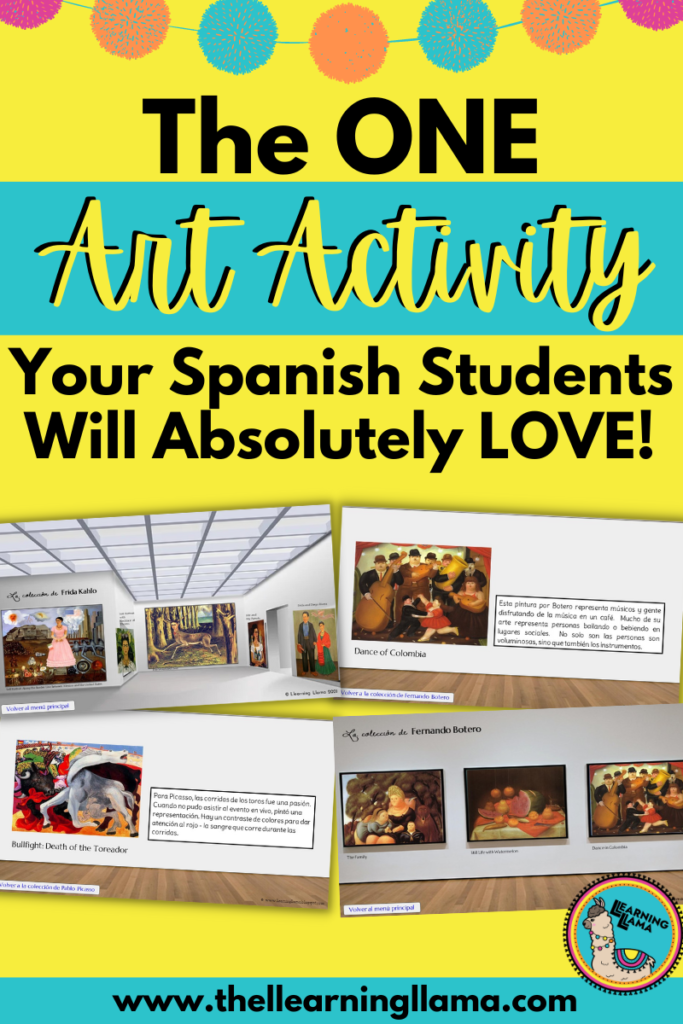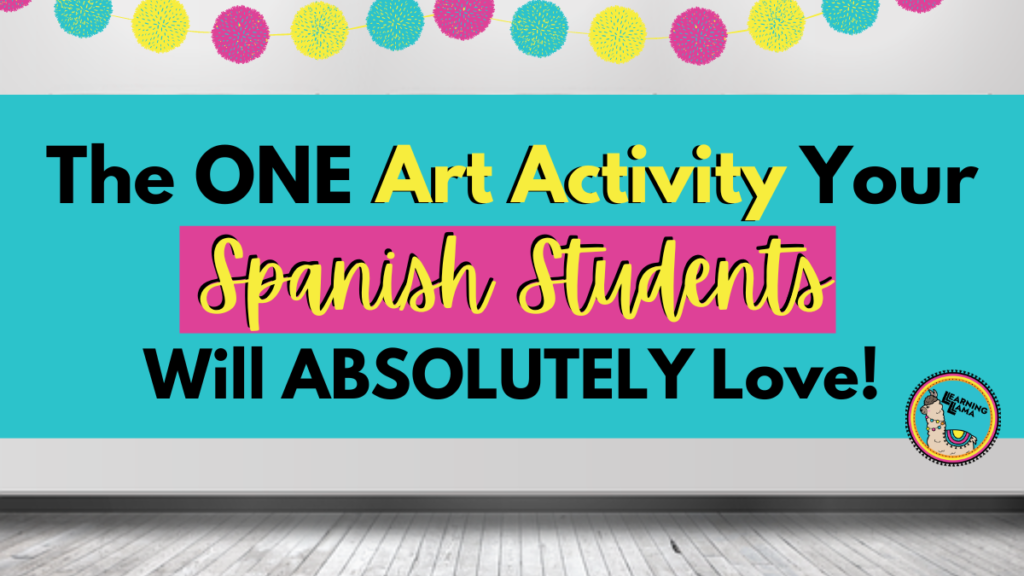Does your Spanish curriculum cover artists like Frida Kahlo, Salvador Dali, or Pablo Picasso? Are you looking to spice up your traditional art lessons with an interactive art activity? Try turning your classroom into an art gallery, and your students will feel like they’re on a field trip to Frida Kahlo’s Blue House or the MOMA without stepping foot outside the school. Using a virtual art gallery is the best art activity to get your students to really analyze artwork.
So, let’s explore how to use an art gallery in your classroom. You’ll have tons of options, both virtually and in-person. You can easily modify this art activity to meet the needs of all learners and levels. Keep reading to learn more!
How to Set Up an Art Gallery in Your Classroom
Print and Hang Images
Printing, laminating, and displaying famous works of art in your classroom is the classic way to set up an art gallery. However, this requires having access to a color printer. I thankfully did when I was first teaching my art units. So I made sure to laminate and save these paintings for future years. Decide if you are creating a gallery for just one artist or a bunch of artists. Select their most famous paintings or even some unique pieces that you want your students to study. You should also make sure to display the name of the artist, the title of the piece, the year it was painted, and if you have time, even add a short description of the work. Your goal should be to make the gallery as authentic as possible.
Virtual Art Gallery
Maybe you don’t have access to a color printer or you need a sub plan. Creating a virtual art gallery is a great second option. Simply take the images of the paintings you want your students to analyze and add them to PowerPoint slides. You can easily type the artist name, title of the piece, and the other details for your students on the same slide as the image.
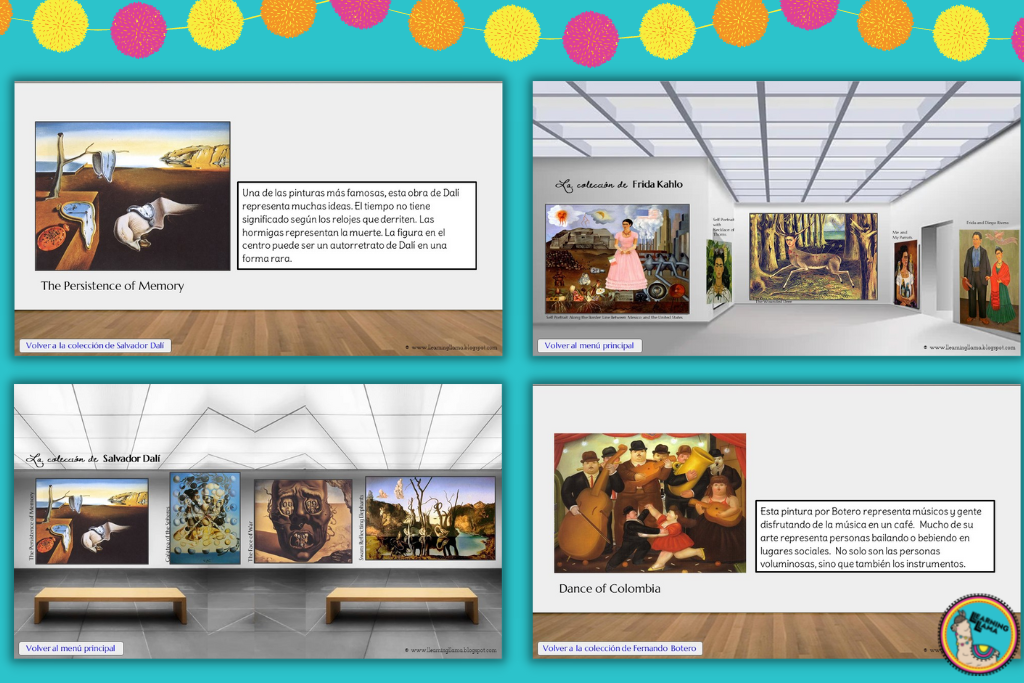
With this option, you can still simulate an art gallery in your classroom if you or your department have access to a laptop cart. Place the laptops around the room, each displaying a different slide of the art gallery presentation. Then, students can still walk around the classroom, as if they were in a museum. Or you can share the presentation with your students, and they can work at their own pace or in small groups.
Grab my Hispanic Virtual Art Gallery in English, Spanish, or both here! It comes complete with over 20 paintings by famous artists such as Picsaso, Dalí, Rivera, Goya, Kahlo, and Botero.
Google Arts and Culture
This website is full of great content – all for free! You can view collections at some of the world’s most famous museums, such as the MOMA, the Tokyo Fuji Art Museum, and many more! Students can navigate the website and view the many paintings, collections, and even street view of famous sites around the world. You could allow your students to explore various museums, send them on a scavenger hunt, or even let them choose the museum they want to visit! As long as they are describing art in the target language, the lesson will serve a great purpose. Grab a FREE Spanish art vocabulary lesson here to get your art unit started.
Activities to Do with an Art Gallery
Scavenger Hunts in an Art Gallery
Students love going on scavenger hunts. Racing a friend and competing to finish first can be just the motivation they need to really get into your Spanish class activities. I really enjoyed turning my art galleries into scavenger hunts. The first time I did this was with a Frida Kahlo lesson. I printed her most famous artworks and posted them around my classroom. I made a list of things that students had to search for or find and count. For example, how many works of art had flowers in them? How many moons do you see? Which painting has Frida represented as an animal, etc. Check out more details about this Frida Kahlo lesson here.
I also took my students on a virtual tour of Frida Kahlo’s museum and had them visit each of the rooms in her Blue House as they searched for various objects and answered questions. You can find the virtual tour of her museum here and my virtual field trip complete with questions here.
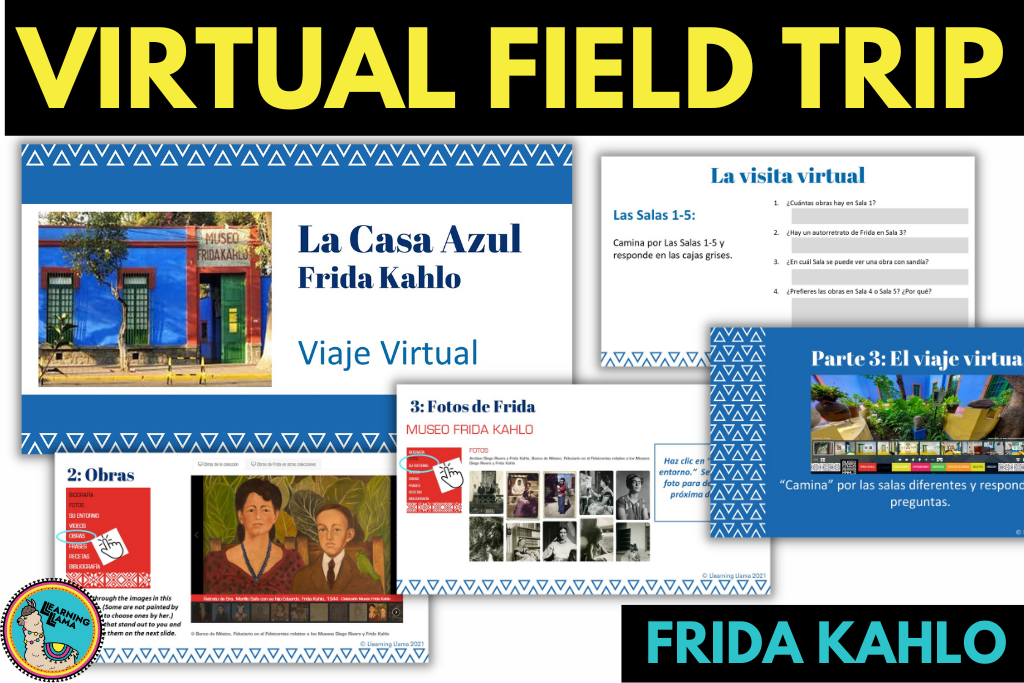
I loved this idea so much that I created it for my virtual art gallery as well! As students “walk” through the gallery of images,” I have a list of questions that they must answer and objects they must find. It keeps them on their toes and really helps them to focus on the images rather than just flipping through the slides.
You can learn more about using scavenger hunts in Spanish class here with this blog post.
Analytical Questions
As your students walk through the gallery, make sure that they have something to think about and ponder. Ask them to reflect on the life of the artist in comparison to the artworks they are observing. How is the artist’s life reflected in each painting? Or maybe focus on the common themes among each artists’ works.
This works best if you have already studied the artists’ lives and themes before diving into the gallery. Maybe you read a biography of the artist or watch a video about their life. This will prompt students to dig deeper into the paintings because they already have an understanding of who the artist is and what their inspirations are.
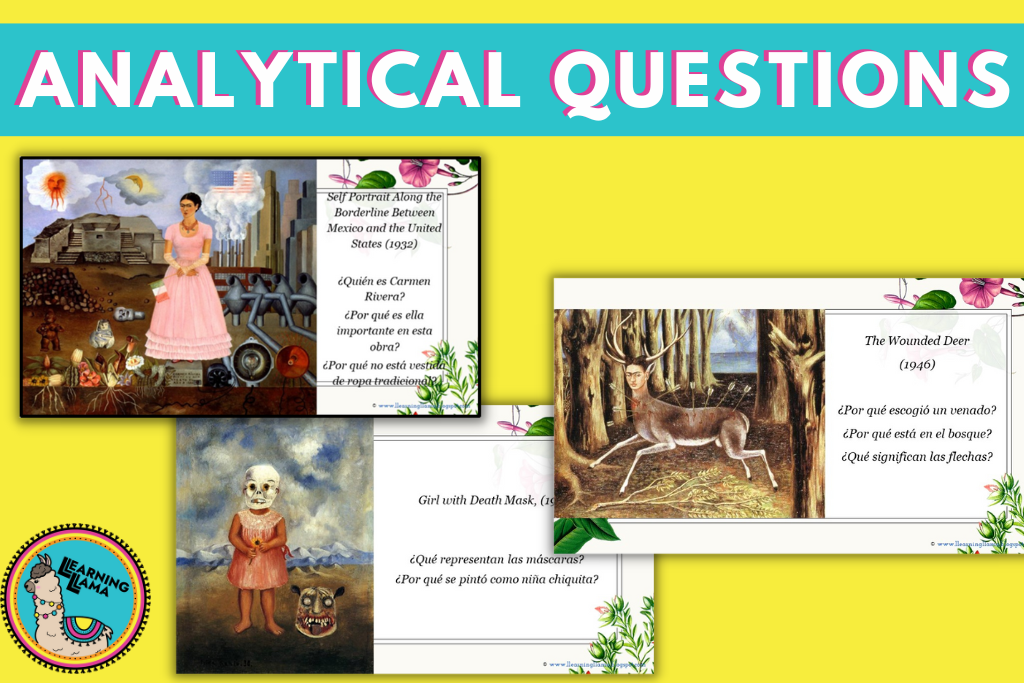
Silent Gallery Walk
How can silence encourage communication in a world language classroom? With a silent gallery walk, your students will be communicating interpersonally through writing. A silent gallery walk is set up as follows: The teacher posts the images on big paper, white boards, or the walls around the room. The students each have a writing utensil and walk around in silence, writing responses to the different prompts either on the paper, white board, or post-it notes. Students can add comments or questions they may have about each painting. As more and more writing is added to the paper, the students should be reading other comments and either elaborating on them, asking a question for clarification, or answering a question that is already there. Despite walking around as individuals, this is a class effort and a silent class discussion. The beauty of the silence (in addition to a few moments of tranquility for us!) is that students are forced to think and be focused without distraction. They are zoned in on their ideas without other students interrupting them or overshadowing them.
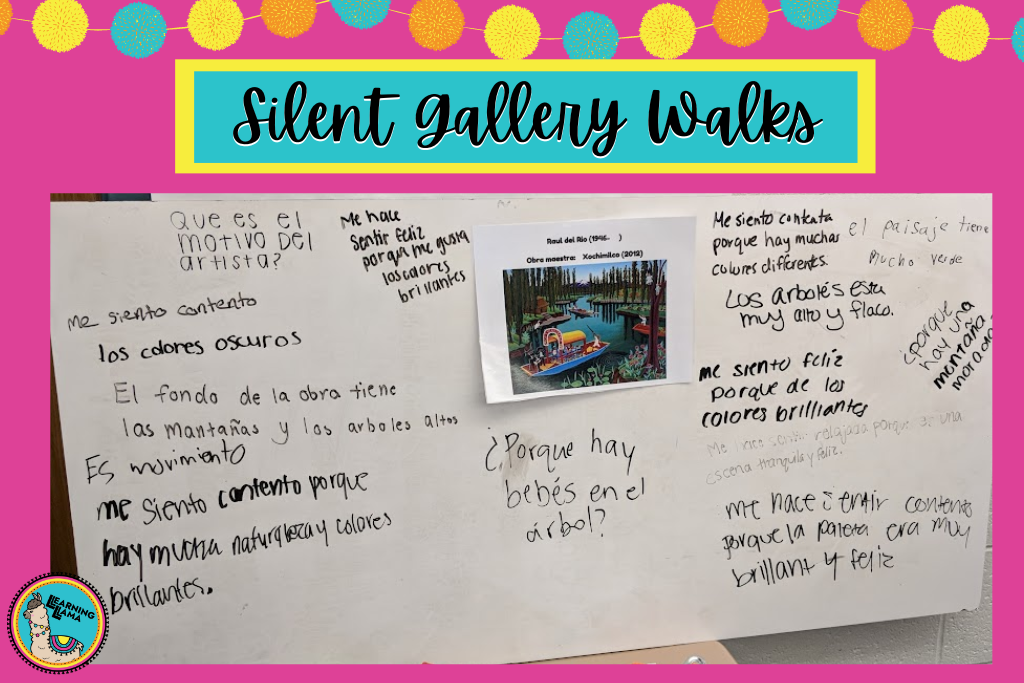
Tour Guides
What better way for your students to practice speaking than in an authentic situation? Have your students take turns being museum docents or tour guides for your other students. They will lead their tour group through the art gallery, explaining important facts about the artist’s life, styles, inspirations, and stories behind each painting. Split up the work, so each student has a few paintings, or each student has a different artist. They can even create the gallery on their own once assigned an artist. This can be done virtually, as well. They create the art gallery on a PowerPoint or Google Slides, and they can record themselves talking about each slide.
And for more inspiration, I would love to see you over in my Facebook Group: Art in Spanish Class. Like-minded Spanish teachers share authentic resources, activities, projects, and videos for incorporating art into any Spanish lesson! You’ll see tons of fun ideas like these art galleries, virtual tours, and more!

Since taking our students to an actual art gallery poses many challenges, bringing the art gallery to your classroom is the next best option. And with these simple tips, it is very easy for you to create! For a more in-depth look at how to teach art in a world language classroom, check out this blog post, filled with tons of practical ideas.
